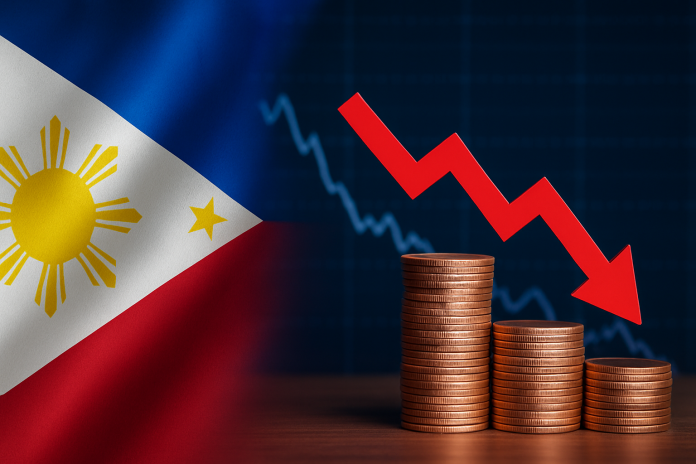The Philippine economy faced a serious economy slowdown in the third quarter, growing only 4.0 percent compared to the same period last year. This result was far below the 5.2 percent expected by experts and weaker than the 5.5 percent growth recorded in the previous quarter. The steep fall has alarmed businesses, workers, and investors, showing that the economy slowdown is deeper than expected.
Economy Slowdown Deepens as Growth Misses Expectations
Government data revealed that the decline was caused mainly by falling confidence among consumers and investors. A major corruption scandal involving government infrastructure projects has led to uncertainty over how public funds are used. This has weakened trust in government spending and slowed both private investment and household activity, worsening the economy slowdown.
Analysts believe that, with inflation staying moderate, the central bank could be pushed to cut interest rates for a fifth time in December. The move may help support growth, but it also highlights how serious the economy slowdown has become.
💥 Deal of the decade? Trump slaps 19% tariff on Philippines—U.S. exports get free pass
Corruption Scandal Intensifies Economy Slowdown
The Philippines is currently dealing with a massive corruption scandal connected to government infrastructure projects, including defective flood-control systems. Authorities are investigating several officials, and the scandal has shaken public trust in the country’s leadership. The case has also worsened the economy slowdown, as many projects have been delayed or stopped for review.
Government figures show that public spending increased only 5.8 percent year-on-year in the third quarter — the slowest pace in a year. Because of stricter review and validation processes, the release of funds for public works was delayed, causing construction activities to stall. As a result, infrastructure spending fell by 26.2 percent, marking its worst drop in nearly 14 years. This decline hit industries that depend on government projects, worsening the economy slowdown further.
The corruption issue has also damaged investor sentiment. Both local and foreign investors have grown cautious, as concerns about transparency and misuse of funds rise. With lower investment and slower project approvals, the economy slowdown has spread across different sectors, from construction to retail.
Public anger over the scandal has added to the tension. People are frustrated to see how deeply corruption has affected development projects. Many feel that the misuse of public funds has robbed communities of needed roads, bridges, and flood systems — essential infrastructure that could have supported jobs and reduced poverty during this period of economy slowdown.
Spending, Disasters, and Slower Consumption Add Pressure
Beyond corruption, natural disasters and lower household spending have added more strain to the economy slowdown. The Philippines was hit by a super typhoon and several smaller disasters that caused damage in many parts of the country. Roads, homes, and businesses were affected, making it difficult for many people to work or trade. These disruptions slowed down production, deliveries, and construction, making the economy slowdown even worse.
Household spending, which usually powers the economy, rose only 4.1 percent — the slowest pace since early 2021. Many families decided to delay buying expensive items like electronics, furniture, and vehicles. With fewer job opportunities and rising uncertainty, people chose to save money instead of spending it. This cautious behavior added more weight to the ongoing economy slowdown.
The national statistics agency reported that, on a seasonally adjusted basis, the economy grew just 0.4 percent from the previous quarter, which was lower than the 0.8 percent economists had predicted. This shows how quickly the economy slowdown has spread throughout the country.
62 Charges Against Alice Guo Deal Major Blow to POGO Industry in Philippines
Officials admitted that reaching the annual growth target of 5.5 to 6.5 percent will be very difficult. They said that the corruption scandal had stopped many planned projects, reducing the “productive capacity” that the government had aimed for. Although tighter controls were needed to prevent further misuse of funds, they also slowed down progress on new and ongoing projects, prolonging the economy slowdown.
The combination of corruption, weaker spending, and natural disasters has placed the Philippines in a challenging position. The third quarter’s results reveal how fragile growth can be when corruption and poor oversight affect public trust. The nation’s economy slowdown serves as a clear reminder of how vital good governance and efficient project management are for building confidence and keeping growth stable.


